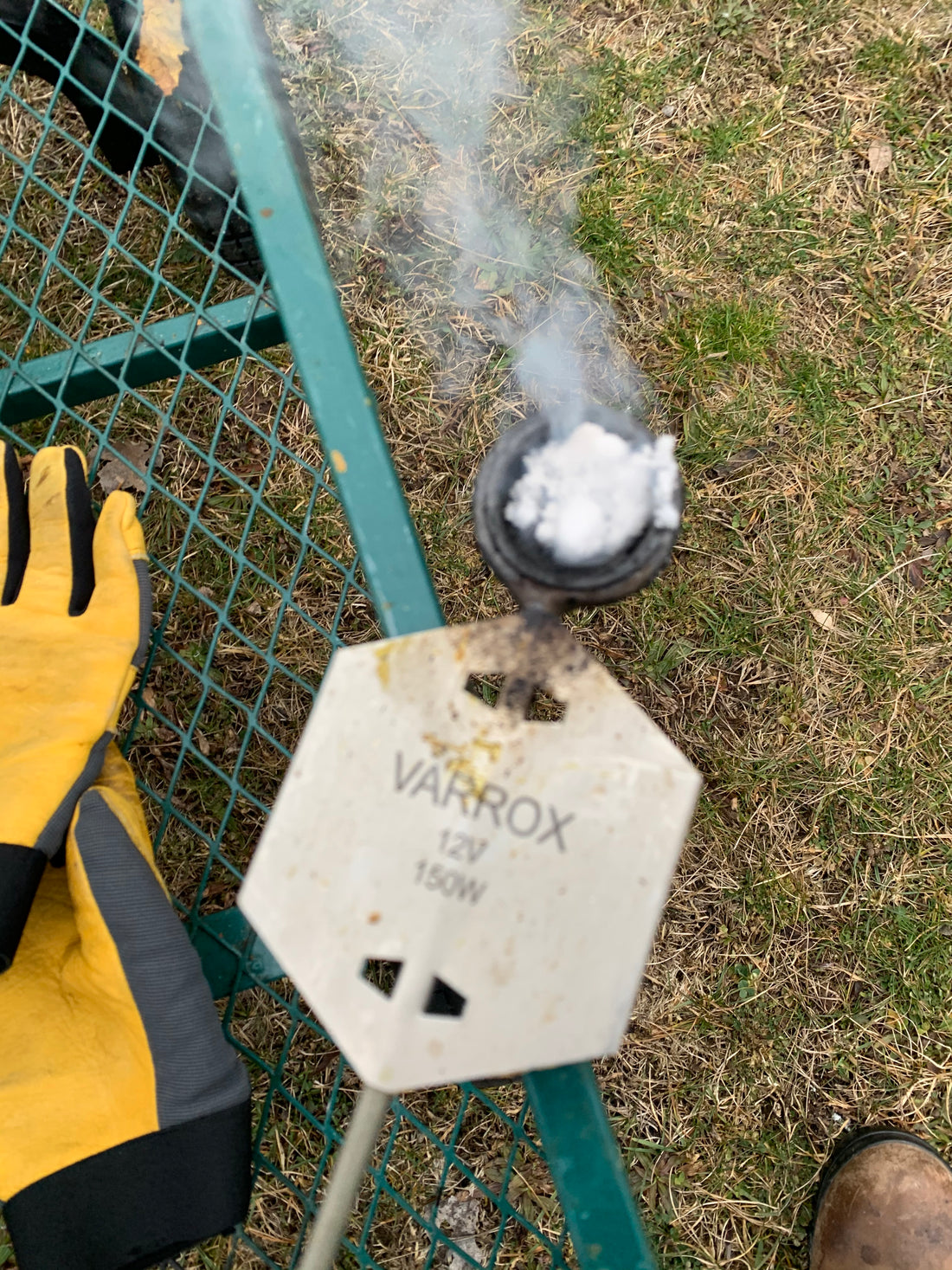
Winter Mite Treatment
David MullinsShare
There are three reasons that honey bees are dying around the world: mites, pesticides, and herbicides. There are many methods and types of mite treatments, and we use two at Bee Great. We also rotate our methods from year to year to reduce the risk of the mites becoming resistant to the treatments.
Like many new beekeepers, we wanted to take an all natural approach to beekeeping and never introduce chemicals in our hives when we first started. So we did not treat for mites. That resulted in us losing all our hives in the first year with high mite counts. Varroa mites reproduce in beehives and are parasites that suck fat from bees. This results in misshapen bees and can quickly kill off an entire colony of bees. So, what is a beekeeper to do? Treat for mites or the bees will die.
There are many ways to treat for mites. Our choice is with formic acid and oxalic acid this year. We pull our honey off the hives August 1, and treat with formic acid. We treat again with oxalic acid the week between Christmas and New Years Day. Then we treat again in May with oxalic acid.
Here's our reasoning. August 1 is about the last day that flowers are blooming in our area. Only goldenrod really has any nectar and it results in a tangy honey. Pulling the best honey in August also gives us 4-6 weeks to treat for mites and for the bees to fill any voids in their honey stores before winter. It takes about 3 weeks for bees to reach maturity from the date the egg is laid, so we have a low mite load in the middle of September when the queen lays eggs for the winter. This gives the best chance of healthy brood and mature bees by the middle of October when they reach maturity.
We place the formic acid - which is similar to jelly - on a paper pad the size of a playing card in the top of the hive. Formic acid works by the bees carrying it out of the hive, thereby spreading it from the top of the hive all the way through the hive to the entrance at the bottom. In contrast, oxalic acid is a crystal that we vaporize from the bottom of the hive. Because it's a vapor, any capped brood is covered in wax and doesn't get treated. So we treat every 5 days for 3 round to ensure all the brood and bees have been covered in the vapor. The queen has laid almost no brood in late December, so the oxalic acid treatment works best when there are little to no brood just after Christmas. We treat again with oxalic acid in May after we split our hives to prevent swarming. This is when the hives have the lowest number of bees during the year, and it helps reduce the mite load which peaks in our area around July. We don't treat in June or July because we have honey supers on the hives and we don't want any of the chemicals we use to end up in the honey that we consume.

David Treating the Hives for Mites

Oxalic acid vaporizing

Vaporizer in hive
So what does all of this have to do with the cost of keeping bees? I'm glad you asked! (LOL). Every mite treatment takes time and costs us for the chemicals and labor. Every hive we lose and have to replace costs us labor and the cost of bees if we buy them. We replace our queens by raising our own, and by buying them. We also keep a diverse genetic population by purchasing bees from different places. Splitting hives is about the most labor intensive time for us.
While recent national reports suggest that beekeepers have been able to replace their hives, they have not accounted for the tremendous cost in doing so. It takes a significant financial and labor investment to replace those hives, and if we're only breaking even in the number of hives we can't grow the number of hives without further investment. Therefore, the cost of beekeeping, just to maintain the number of hives lost each year which is about 30% nationally forces beekeepers to put their effort into replacing hives rather than growing the number of hives and producing more honey. Splitting the hives also means fewer bees to build up the colony to it's highest level of bees by the nectar flow in late June through July.
The solution to the mite problem is to keep the bees healthier in the first place. That means we have to reduce the amount of pesticides and herbicides that weaken the bees and reduce the availability of their foraging sources. Alternative forms of farming and landscape maintenance are the key to honey bee survival, and the key to keeping honey prices lower along with banning imports of honey from foreign countries. Most importantly, you can make a difference by keeping bees (or let us do it for you with our beekeeping service) and buying our local honey and skin care products today!
By the way, I wear my veil even in the winter months when the bees don't leave the hive due to the cold. A longtime beekeeper told me he was working the bees one cold day and one flew right up his nose and stung him. Better safe than sorry. LOL!

1 comment
Wonderful Work.